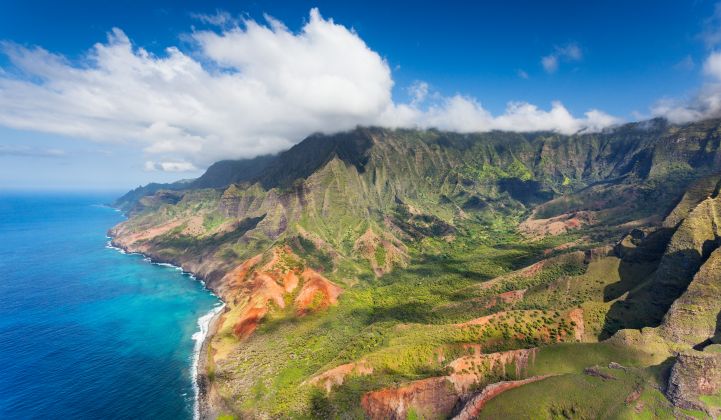AES Distributed Energy will build a solar-plus-storage "peaker plant" on the Hawaiian island of Kauai that stands out both in capacity and power price.
The project, if approved by state and local regulators, will combine 28 megawatts of solar photovoltaic capacity with 20 megawatts of five-hour duration batteries. AES will own and operate the system, and has executed a power purchase agreement to sell power to the Kauai Island Utility Cooperative (KIUC) at 11 cents per kilowatt-hour. The project is expected to be operational by late 2018.
Once completed, the facility will generate 11 percent of the island's electricity and push the share of renewable generation above 50 percent, KIUC President and CEO David Bissell said in a statement.
“The project delivers power to the island’s electrical grid at significantly less than the current cost of oil-fired power and should help stabilize and even reduce electric rates to KIUC’s members," he said. "It is remarkable that we are able to obtain fixed pricing for dispatchable solar-based renewable energy, backed by a significant battery system, at about half the cost of what a basic direct-to-grid solar project cost a few years ago.”
The combination of solar-plus-storage and Kauai might sound familiar -- the cooperative utility announced a groundbreaking deal with SolarCity in September 2015 for a solar plant backed by batteries. That project, still under construction, paired 17 megawatts of solar PV with Tesla Powerpack batteries with 13 megawatts of power and 52 megawatt-hours of energy. The price tag on that power: 13.9 cents per kilowatt-hour.
In a little over a year, then, solar-plus-storage economics have improved such that AES can field more power capacity, an additional hour of duration and a lower volumetric price than SolarCity's project.
That's good news for the growing market segment of "firmed solar," which promises greater control and dispatchability of the intermittent resource by storing it in batteries. The ability to control the timing of the plant's output enables it to meet peak demand, a role typically performed by expensive natural-gas peaking plants. Unlike other states, Hawaii produces most of its electricity from petroleum-fired plants, as well as some coal plants.
Fossil fuels have to be shipped into Hawaii, resulting in the nation's highest electricity prices. Leveraging the solar resource for the evening demand peak on Kauai allows the utility to cut back on fossil fuel costs; the AES batteries can keep pumping out power for five hours after the sun goes down.
In recent years, solar deployment has saturated the island grids with midday generation. On optimally sunny days, renewables already supply up to 90 percent of the island's load, Katie Fehrenbacher reported. With nowhere to export surplus power, Kauai needs to pair new solar plants with storage to avoid overloading its wires.
These conditions make Hawaii an ideal setting for proving the solar-plus-storage model, but they also limit the applicability of the model to other markets.
"KIUC is the first utility to sign PPAs for firmed solar energy, an energy-intensive process that necessitates the higher discharge duration," said Daniel Finn-Foley, senior analyst covering energy storage at GTM Research. "This kind of application is one the energy storage industry has long been bullish on, but the true proof of concept will be to see if it can be duplicated in less isolated, and less sunny, areas, where traditional generation is cheaper and where 11 cents might not be competitive."
Solar-plus-storage also has to prove it is worth the additional effort compared to pure solar plants. The economics become much more favorable in a solar-saturated environment, where the marginal value of new solar generation is low but the value of peak shaving is high.
The AES project in Kauai will still help make the case for solar-plus-storage in more challenging markets. As plants like this one log more hours of operation, and prove their ability to stand in for more expensive fossil-fueled peakers, storage developers will harvest more data to support project pitches elsewhere.
The sheer size of the AES project also helps put this application on the map.
"At 20 megawatts, this project is comparable in size to several recent battery energy storage projects, including the Mira Loma and Pomona systems associated with the Aliso Canyon gas leak," Finn-Foley said. "Its 100-megawatt-hour energy capacity and 5-hour discharge duration, however, make it one of the highest-energy battery projects planned over the next two years in the U.S."



